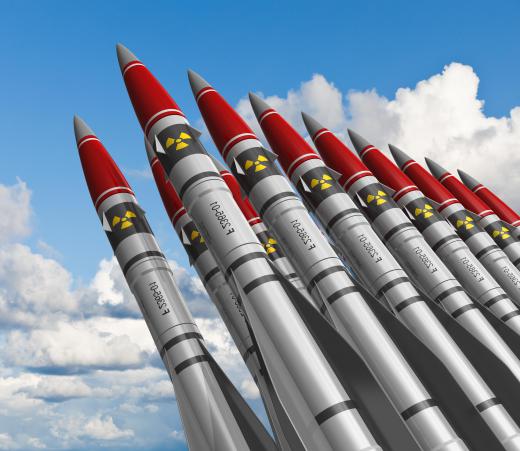What is Project Plowshare?
 Michael Anissimov
Michael Anissimov
Project Plowshare, officially known as Operation Plowshare, was an effort to develop nuclear weapons for peaceful civilian purposes, such as creating artificial harbors or breaking down subterranean walls between natural gas deposits. The project was named in 1961, from the Biblical line about beating swords into plowshares. This is a metaphor for the recommissioning of any tool of war into a tool of peace. Project Plowshare was mirrored by a similar project in the Soviet Union about a decade later, "Nuclear Explosions for the National Economy".
Project Plowshare never got beyond the testing stage, but the suggesting applications were numerous. These idea included widening the Panama Canal, creating a new canal through Nicaragua called the Pan-Atomic canal, blowing paths through mountains for highways, connecting inland river systems, connecting underground aquifers in Arizona, or blowing caverns underground for the storage of water, natural gas, or petroleum. None of these ever came to pass, though tests did occur.

28 tests were conducted for Project Plowshare. The first application of peaceful nuclear explosives was to be Project Chariot, an effort to create an artificial harbor in Cape Thompson, Alaska by chaining together five thermonuclear explosions. However, over objections from the natives, and little economic benefit to gain from the danger involved, the project was shelved.

A proof-of-concept atomic blast took place shortly afterward, on 6 July 1962 at Yucca Flats in southern Nevada. The bomb was lowered to the bottom of a shaft 194 m (635 ft) deep and subsequently detonated. The blast displaced 12 million tons of soil, creating a radioactive cloud that rose to 12,000 ft (3.7 km). This radioactive dust cloud then floated hundreds of miles to the southeast, dropping fragments of material underneath it. The result was the largest man-made crater in the United States, 100 m (320 ft) deep, with a diameter of 390 m (1280 ft).
Project Plowshare continued to be pursued for more than a decade, until 1977, though all the explosions were just tests. In that year, Congress quietly ended funding for the project, and it was rarely mentioned again. In the 70s and 80s, popular opinion turned against nuclear testing, and today, international treaties forbid all non-underground nuclear explosions, making further pursuit of the concept unlikely.
AS FEATURED ON:
AS FEATURED ON:












Discussion Comments
I can see where setting off a small nuclear bomb might be a temptation for some industries. I know my dad talked about how much time it took to blast rocks at the quarry where he worked. If they could have set off one giant blast and spent the rest of the year picking up the pieces, life would have been much easier. I can't imagine it would have been much fun for all the people who would have owned houses near the blasting site, though.
I had never heard of Project Plowshare until I read this article. I'm glad it never got past the proof-of-concept stage, considering what sort of long term damage nuclear testing can leave behind. I think there are some peaceful uses for something as powerful as a nuclear bomb, but there are also plenty of safer alternatives. I can only imagine what coal mining would have been like for my ancestors in Pennsylvania if the company had used small atomic bombs instead of shovels and dynamite.
Post your comments